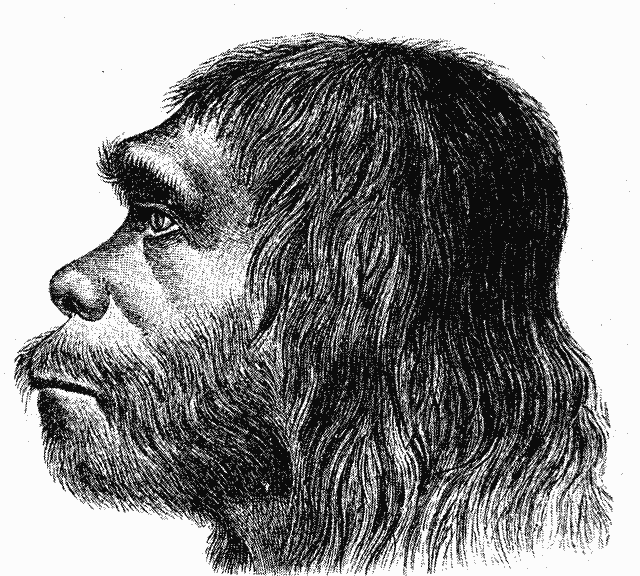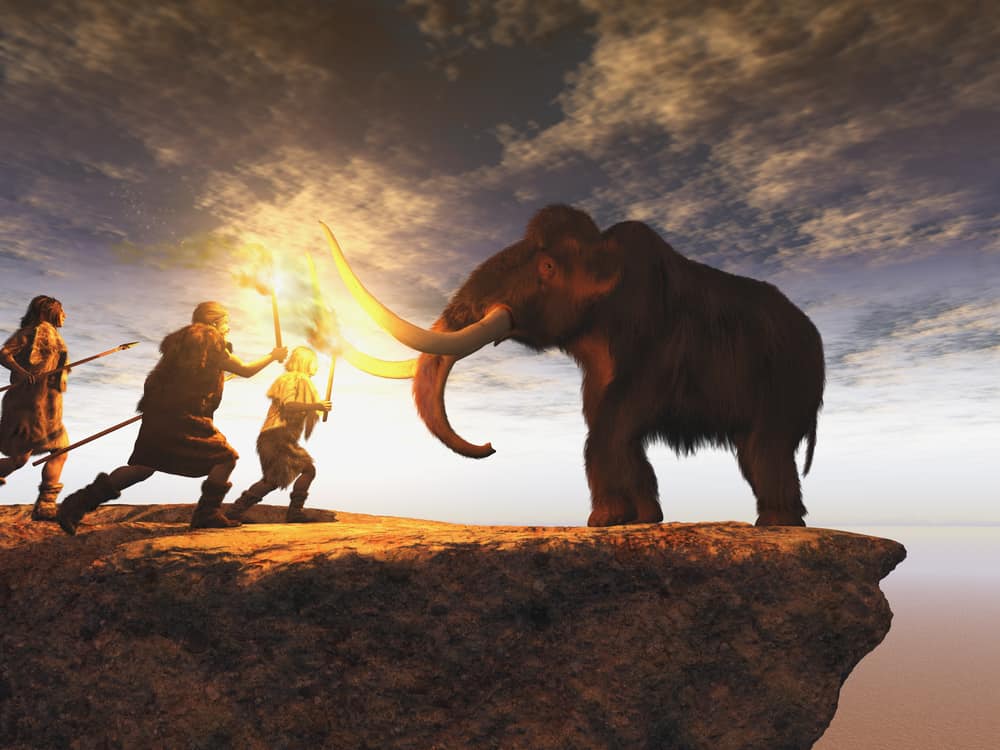By the time modern humans arrived on the scene, Neanderthals were already living in fragmented groups and suffering the effects of inbreeding. When did Neanderthals go extinct and how did Neanderthals go extinct?
While humans may or may not have been the linchpin in their final demise, neanderthals did go extinct soon after modern humans came onto the scene in Eurasia.
It’s tricky to figure out why extant species are going extinct. Harder yet is figuring out why a species that’s been extinct for a long time disappeared. Despite this, Neanderthals are the early extinct human-like species we know the most about.
Let’s go over some of the details now.
When Did Neanderthals Go Extinct?
Neanderthals went extinct about 40,000 years ago. Modern humans arrived in Europe approximately 5,000 years before Neanderthals went extinct.
Neanderthals came into being about 400,000 years ago and were best adapted to colder climates like those during the ice age. The ice age lasted from 115,000-11,700 years ago and it’s been postulated that as the earth warmed, Neanderthals declined.
Neanderthal vs Homo Sapien Explained

Neanderthals are a separate species from modern humans.
©IR Stone/Shutterstock.com
Neanderthals (Homo neanderthalensis) are a separate species from modern humans (Homo sapien). Neanderthals evolved in Asia and Europe while Africa played host to evolving Homo sapiens. Humans did not evolve from Neanderthals despite popular depictions of humans evolving from cavemen.
Neanderthal brains are smaller in a variety of areas which may suggest they weren’t as good as humans at things like tool use, numbers, higher concepts, and spatial integration. This is probably due to the variances between modern human and Neanderthal brains.
The skulls of Neanderthals are elongated compared to modern humans. They also have prominent eyebrows and a huge wide nose. Other bones in the body are thicker and stockier than human bones.
Neanderthals had a barrel chest in comparison to humans which may have given them a better lung capacity. Homo sapiens are more likely weaker than neanderthals.
Neanderthals did eat some plants and fungi but are mostly carnivorous whereas humans forage more for plant matter. The plant matter found jammed between fossilized neanderthal teeth may result from the stomach contents of a vegetarian animal and not from active foraging.
The bodies of Neanderthals are stockier and shorter than humans. They’re able to run well, but it costs 30% more energy than the same distance cost for a human. Neanderthals likely simplistically talked to each other.
How Did Neanderthals Go Extinct?
Nobody knows why the Neanderthals went extinct.
There are various theories regarding the extinction of the Neanderthals. A combination of events likely led to their demise.
Some of the theories regarding Neanderthal extinction include:
- Inbreeding
- Interbreeding with Modern Humans
- Disease and Parasites
- Outcompeted by Modern Humans
- Modern Humans Violently Replaced Neanderthals
- Climate Change Affected Neanderthal Habitats
Neanderthal Extinction: Inbreeding

Inbreeding helped contribute to the extinction of Neanderthals.
©Hermann Schaaffhausen – Public Domain
Neanderthals frequently participated in half-sibling, cousin, and niece/nephew breeding. If Neanderthal populations then become isolated, the probability that harmful inbreeding will occur raises even more.
Inbreeding allows for the degradation of genetics which causes an array of problems in subsequent generations. The longer inbreeding takes place, the more individuals born to an inbreeding population deviate from normal body composition and disease resistance.
Interbreeding Neanderthals with Modern Humans
While it’s unlikely that Neanderthals were just absorbed into the human population, it is possible that crossbreeding occurred and that this had an impact on neanderthal populations.
Enough crossbreeding did occur and almost every person alive that has non-African ancestors has a little bit of Neanderthal DNA. Because of this, Neanderthals aren’t truly extinct in a small capacity.
Neanderthal Extinction: Disease and Parasites
Diseases that evolved to be centered on Homo Sapiens may have decimated the Neanderthals. The Neanderthal immune system was not up to the same standards as that found in Homo sapiens, so diseases that might be asymptomatic in the human population are now deadly plagues in the Neanderthal population.
Also, as humans moved north from Africa into Eurasia, they would have brought these diseases with them. They would have the advantage over them because their population had dealt with them longer and had a chance to gradually build immunity whereas Neanderthals were smacked with a new disease.
This decimation is similar to the wipeout of Indigenous American tribes by European disease when the New World was explored.
Neanderthals Outcompeted by Modern Humans
Because humans probably had both disease resistance and more clever responses to their environment than Neanderthals, it may be that humans outcompeted Neanderthals. The presence of modern humans, over a few thousand years, allowed natural selection to dwindle Neanderthals to extinction.
Neanderthals may not have been as good at collecting resources as humans. That’s because humans divided up labor between the sexes whereas both male and female Neanderthals focused on hunting.
A division of labor allows for more productivity, and the Neanderthals may have lost the existing competition because of this. Homo sapiens’ use of domesticated dogs for hunting may also have edged out Neanderthals.
Humans were able to sew complex clothing items for themselves to protect against the elements. This may have given them an advantage over Neanderthals. A modern human’s ability to pass this knowledge from generation to generation is the root of the differentiation in early clothing creation between the two species.
Modern Humans Violently Replaced Neanderthals
Perhaps modern humans and neanderthals came into conflict or were able to enact war campaigns against each other. Humans may have used their more advanced arrows, bows, and other tools to wage more effective campaigns against neanderthals than what was received in return.
Climate Change Affected Neanderthal Habitats

Neanderthals exclusively hunted large mammals.
©Esteban De Armas/Shutterstock.com
Neanderthals were adapted to hunt large mammals that existed during the Ice Age whereas modern humans made use of smaller meat sources like rabbits just as readily.
When the climate began to warm toward the end of the last Ice Age, some of the large mammals that Neanderthals depended on went extinct. Because that was their primary food source without many alternatives, it deeply affected the Neanderthal population.
Humans may have been participating in a form of trading between groups within their population. Neanderthals didn’t do this so if their environment drastically changes they had no backup plan.
The photo featured at the top of this post is © Roni Setiawan/Shutterstock.com
Thank you for reading! Have some feedback for us? Contact the AZ Animals editorial team.






